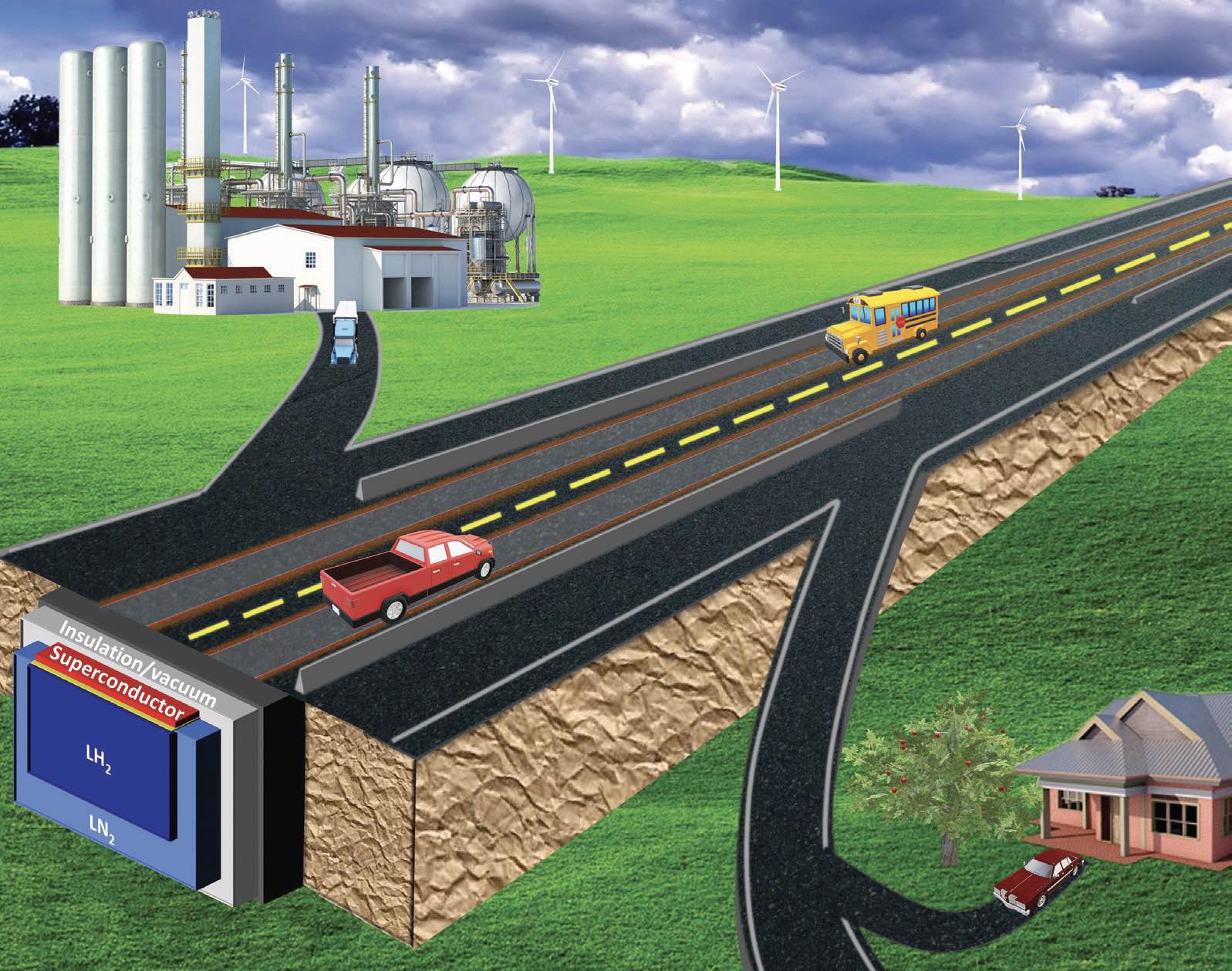Administration of the project
Superconducting highway
By Dr. Neil Canter, Contributing Editor | TLT Tech Beat August 2023
Researchers developed a concept that has the long-term potential to significantly reduce the consumption of the fossil fuels causing climate change.
• A superconductor guideway was constructed that demonstrates the potential for high-speed transport of people and goods using vehicles equipped with permanent magnets.
• Liquid hydrogen can be transported and stored due to the low temperature operating conditions of the superconductor highway.
• The superconducting highway may significantly reduce the need for using automobiles and airplanes leading potentially to a significant reduction in carbon dioxide emissions.Preparation of superconducting materials at higher and higher temperatures, preferably at room temperature, remains a long-term goal for use in transportation and manufacturing processes because of the potential for conducting and storing electricity without loss. This is now becoming particularly important with the need for identifying approaches that are more sustainable.
Currently, superconductivity materials are utilized in niche high magnetic field applications such as magnetic resonance imaging (MRI), etc., and not in large-scale transportation applications such as a magnetic levitating (maglev) train due to cost. Zhifeng Ren, M.D. Anderson Chair Professor in the department of physics and director of the Texas Center for Superconductivity at the University of Houston (TcSUH) in Houston, Texas, says, “Magnetic levitation occurs when a magnet is placed in close proximity to a type II superconductor generating magnetic flux pinning (Meissner effect). This phenomenon enables a vehicle to ride suspended in air that overcomes road friction. In the demonstrated maglev train, superconductors are placed in the undercarriage, and the rail used is permanently magnetized. The problem with magnetic levitation is the need to have cryogenics in each car of the train to cool the superconductors down to 77 K, and the road to having permanent magnets is very expensive.”
A second application is the production of superconducting cables that function to transmit and store electric power without loss over long distances. Ren says, “While the advantages over current transmission cables are readily apparent due to the minimization of power loss due to resistance, the high cost of cables and the technological deficiencies have limited the use of superconducting cables.”
An additional problem with both of these applications is that each system is limited to only two functions, e.g., the maglev train only provides high-speed mass transit and freight transport, whereas superconducting cables are only able to transmit and store electrical power.
Ren envisions that superconductivity can become viable from a practical standpoint if the applications for magnetic levitation using superconducting cables to transport people and goods with the maximum flexibility can be combined with minimization of electrical power transmission and storage loss—and hydrogen, the cleanest energy source available, is used. He and his colleagues have now developed the concept of a superconducting highway that has the long-term potential to significantly reduce the consumption of the fossil fuels causing climate change.
Superconductor guideway
Ren and his colleagues developed a superconductor guideway where high-speed transport of people and goods can be achieved through vehicles equipped with permanent magnets levitating above a superconductor guideway that has the function of transmitting and storing electrical power. He says, “We believe that the existing highway system can be converted into a superconducting highway in this manner, which represents the reverse of what has been used in the traditional maglev train concept to make it unnecessary to have so many very expensive magnets on the road. This approach also eliminates the need for cooling down individual cryostats in vehicles, which can be very expensive and enables the development of a supercooled superconductor guideway.”
The added benefit for the superconductor highway is that operating conditions will facilitate the transport and storage of liquid hydrogen. Ren says, “Liquid hydrogen, maintained at 20 K, is perfect for cooling the superconductor to generate a very strong suspension force to lift any vehicles. To minimize the loss of liquid hydrogen, good insulation using a vacuum layer and even liquid nitrogen have to be included.”

Currently, superconductivity materials are utilized in niche high magnetic field applications such as magnetic resonance imaging (MRI), etc., and not in large-scale transportation applications such as a magnetic levitating (maglev) train due to cost.
By building the infrastructure on the existing highways without acquiring new land for transporting liquid hydrogen, Ren believes this can be used to efficiently move this source of clean energy to various locations where it will be needed for such applications as generating electricity, and many other industries needing hydrogen nationwide.
From the transportation perspective, Ren feels that the superconducting highway may significantly reduce the need for using aviation to transport people and goods that produce a huge amount of carbon dioxide polluting the atmosphere. He says, “Vehicles using the superconducting highway will be able to travel five times faster at speeds up to 640 kilometers per hour, or even to 1,000 kilometers per hour if it is built inside a partially evacuated tube. This should enable individuals to move from Point A to Point B in a time frame similar to an airplane and much faster than high-speed railroad travel. The added benefit is that the levitation process eliminates the need for using internal combustion engines leading potentially to a significant reduction in carbon dioxide emissions from both the vehicles and airplanes.”
Figure 3 shows a schematic of the superconducting highway. Ren says, “Vehicles will be able to operate using conventional power systems to travel to the superconducting highway. Once they reach the highway, they also will need a magnetized undercarriage to access the levitation system (analogous to an individual using a ski to go skiing). Once on the super highways, individuals can relax and travel in a similar manner to riding in an airplane flying at low altitude.”

Figure 3. A schematic illustrates how vehicles can access the superconductor guideway. Please note that LH2 (liquid hydrogen) and LN2 (liquid nitrogen) are present to cool the superconducting cables, and the LN2 and vacuum layers thermally insulate the LH2. Figure courtesy of the University of Houston.
The researchers constructed a superconducting guideway to demonstrate that the concept is doable. A small-scale levitating vehicle was constructed using a permanent magnet magnetizer consisting of blocks of neodymium iron boron. The vehicle levitated three to six millimeters above a superconducting guideway that contains a linear array of yttrium barium copper oxide superconductors. Once the temperature is reduced to 77 K, a magnetic flux is pinned in the superconducting guideway leading to levitation of the magnet. The vehicle freely moves back and forth along the guideway.
The initial experimental work was done by just using liquid nitrogen. Ren says, “We will develop a cryogenic system to handle liquid hydrogen in the future.” Challenges the researchers indicate will need to be overcome are mainly financial since the main technical issues have been overcome.
Additional information can be found in a recent article1 or by contacting Ren at [email protected].
REFERENCES
1. Vakaliuk, O., Song, S., Delor, U, Werfel, F., Nielsch, K. and Ren, Z. (2023), “A multifunctional highway system incorporating superconductor levitated vehicles and liquefied hydrogen,” APL Energy, 1, 016107.
Neil Canter heads his own consulting company, Chemical Solutions, in Willow Grove, Pa. Ideas for Tech Beat can be submitted to him at [email protected].



Be the first to comment